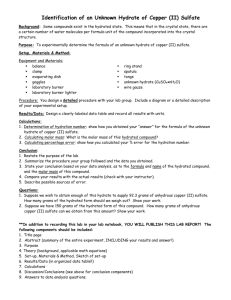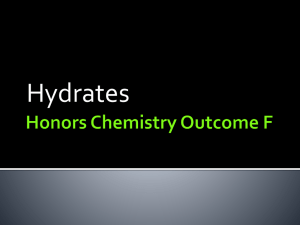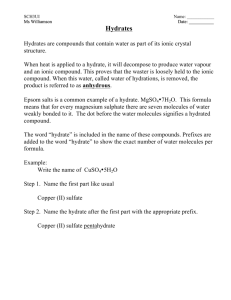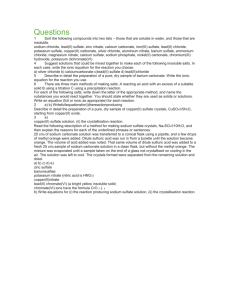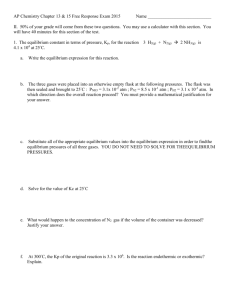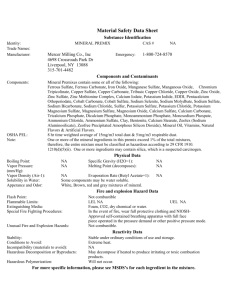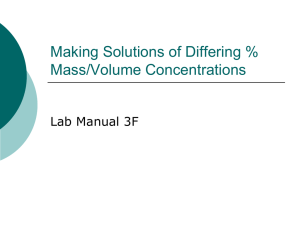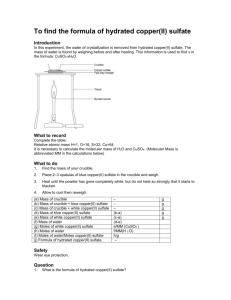Water in a Hydrate
advertisement
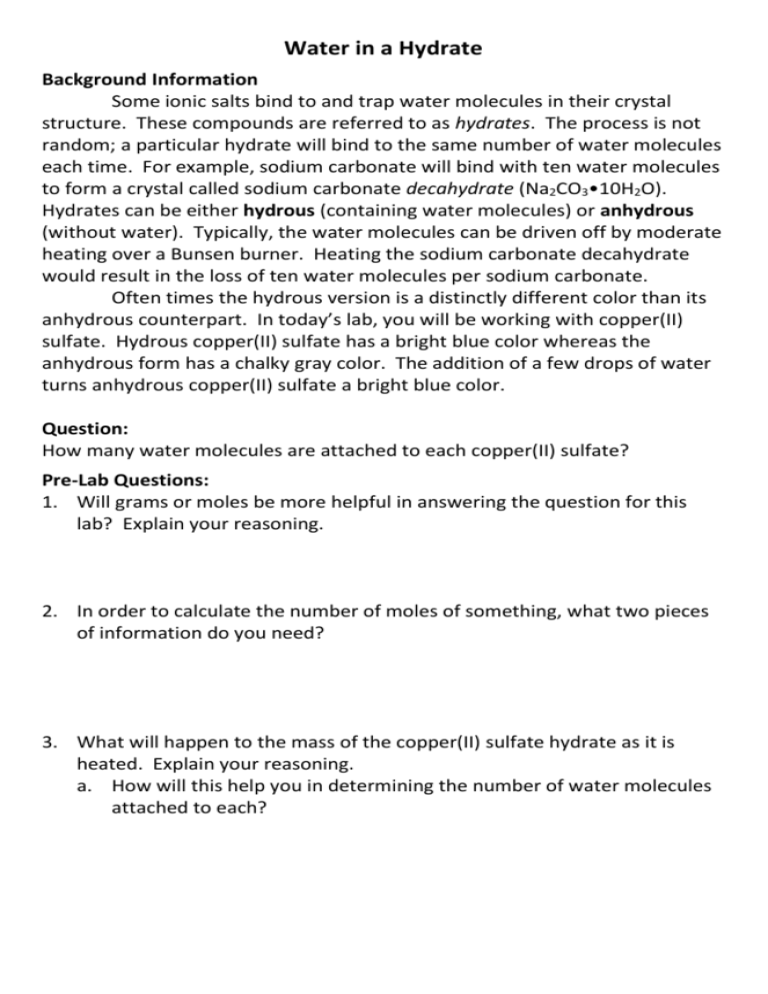
Water in a Hydrate Background Information Some ionic salts bind to and trap water molecules in their crystal structure. These compounds are referred to as hydrates. The process is not random; a particular hydrate will bind to the same number of water molecules each time. For example, sodium carbonate will bind with ten water molecules to form a crystal called sodium carbonate decahydrate (Na2CO3•10H2O). Hydrates can be either hydrous (containing water molecules) or anhydrous (without water). Typically, the water molecules can be driven off by moderate heating over a Bunsen burner. Heating the sodium carbonate decahydrate would result in the loss of ten water molecules per sodium carbonate. Often times the hydrous version is a distinctly different color than its anhydrous counterpart. In today’s lab, you will be working with copper(II) sulfate. Hydrous copper(II) sulfate has a bright blue color whereas the anhydrous form has a chalky gray color. The addition of a few drops of water turns anhydrous copper(II) sulfate a bright blue color. Question: How many water molecules are attached to each copper(II) sulfate? Pre-Lab Questions: 1. Will grams or moles be more helpful in answering the question for this lab? Explain your reasoning. 2. In order to calculate the number of moles of something, what two pieces of information do you need? 3. What will happen to the mass of the copper(II) sulfate hydrate as it is heated. Explain your reasoning. a. How will this help you in determining the number of water molecules attached to each? Procedure: 1. Devise a procedure for answering the question above. You will have to call upon your knowledge of grams and moles to answer the question. The following information will help you plan. a. Overheating the copper(II) sulfate will cause the compound to decompose. The decomposition can be observed by the distinct reddish-brown color of copper. b. During heating, you will need to stir the hydrated copper(II) sulfate to prevent it from clumping. c. If you use a crucible, be sure to clean it our first and then heat over Page 1 the flame to drive off all excess water, wiping it dry is not enough. d. When working with Bunsen burners, be sure to have hair pulled back and loose clothing secured. 2. Record your procedure in your lab notebook. Be sure to include a data table. 3. Get your procedure approved prior to collecting data. Data Analysis: After collecting data, make a new section in you lab titled Data Analysis. Introduce any calculations with a sentence describing what the calculation is. For example, a calculation of percent yield would look as follows. We used the final mass of barium chloride and the mass we calculated from the balanced equation to find the percent yield. 23.6gBaCl 2 26.8gBaCl 100% = 88.1% 2 Post Lab Questions: Write a conclusion describing in detail how you determined the number of water molecules attached to each copper(II) sulfate. Include the final formula for the hydrous form of copper(II) sulfate. If you need help writing the formula for a hydrate there is an example in the background information of the formula for sodium carbonate decahydrate.
